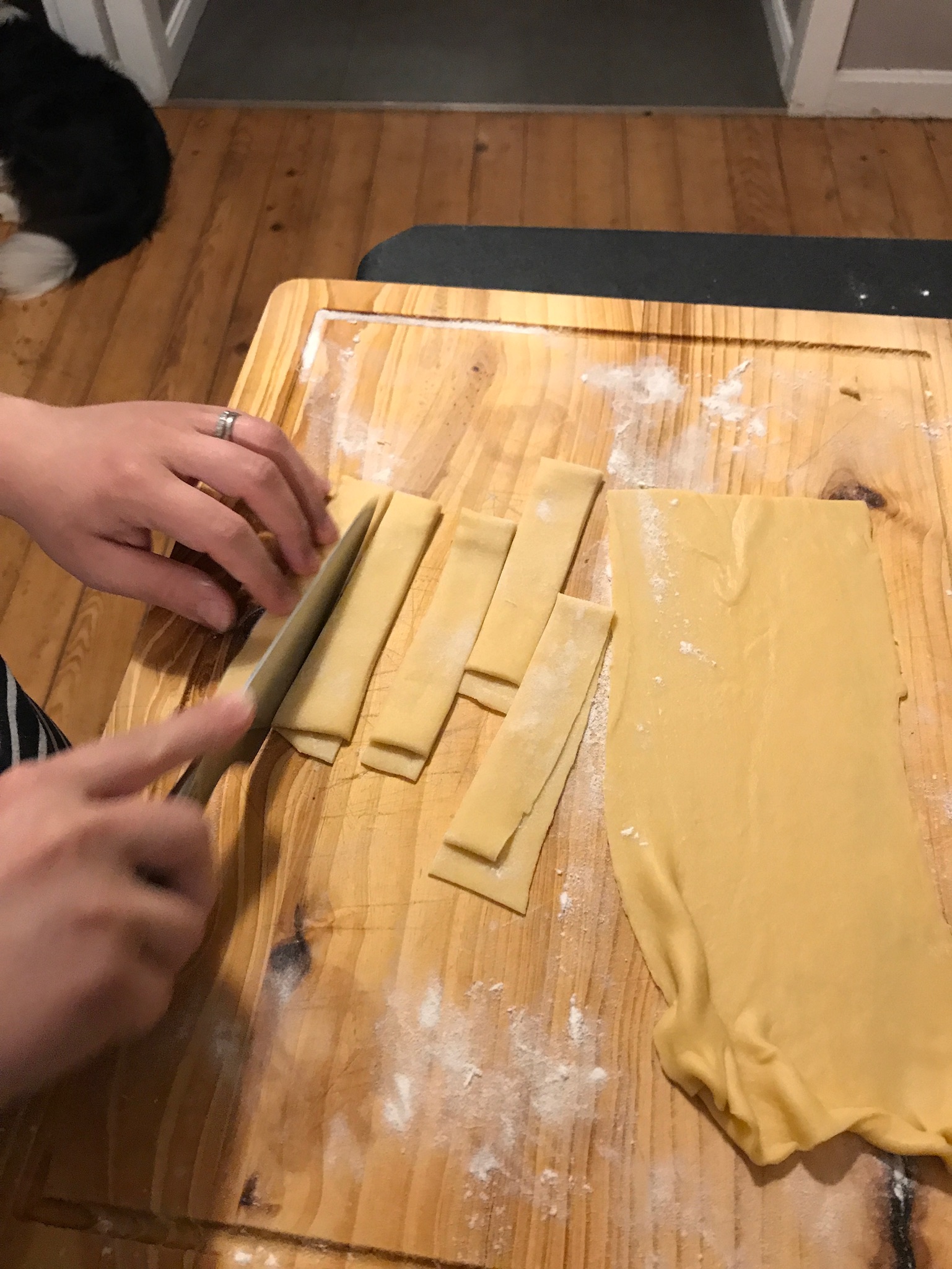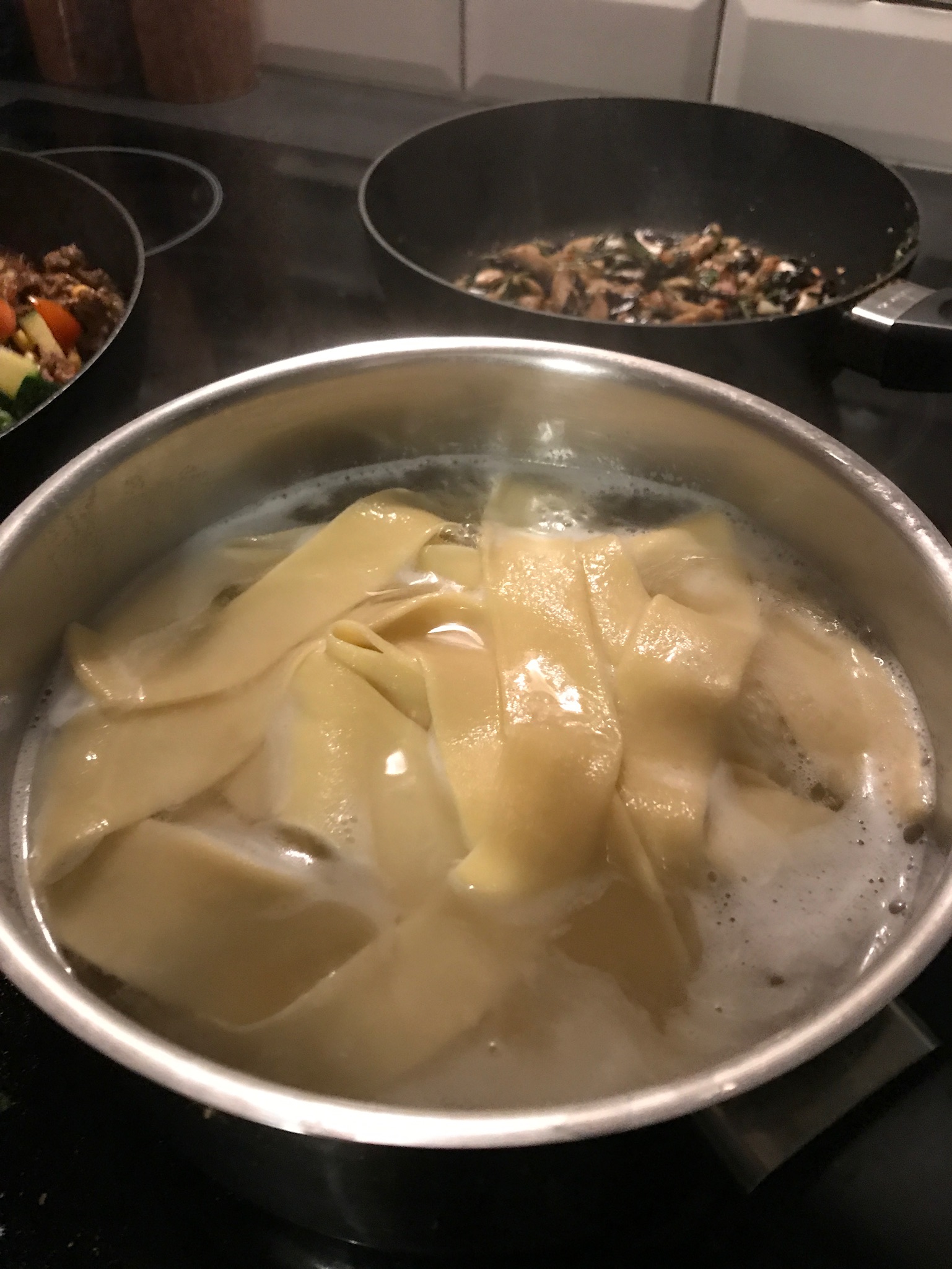The warmer mornings are making getting out of bed a little easier and the days are starting to lengthen, allowing more time for fetch with the doggos. My belly is stretching beyond what I believe is possible (even though it’s got a long way to go) and the little human inside of me is getting stronger and more wriggly every day. The first of my stretch marks has well and truly made itself at home and I am relieved – because it means our little guy is growing despite having a few things going against him.
All of these observations mean that Spring is here and that it’s well and truly time to start thinking about our Spring/Summer crop. We moved our vegie patches last season to the front of the yard (to keep them away from our vegie loving Border Collies) and they really struggled with less sunlight. I’m crossing my fingers and toes that the longer summer days will be enough to keep our vegies going this season. We only have a small set up, but we keep adding to it as we can afford to. It’s growing with our family!
This planting season has been influenced greatly by our journey to reducing waste in our home. We are now more than ever, reliant on the veg we can grow to provide us with waste-free, organic eating options. We are also heavily invested in our compost pile and Tom has been diligently adding to it and turning it every couple of days. We’ve actually just upgraded our compost system to keep up with our vegie patches, but I’ll write another blog post about this later.
Most planting seasons I’m too disorganised to grow from seed, so we usually buy seedlings from a lovely old couple at our local farmers’ markets. Whilst we love buying from them (and I’m sure we still will at times!), buying seedlings comes with a bunch of plastic containers, that are reusable but to be honest – I’ve never reused them (mostly because we destroy them trying to get the seedlings out!
This season we’ve decided to give planting from seed a go! Our main reasons for doing this are to give ourselves a new challenge, support heirloom varieties, increase our plant diversity, support a small Australian business and to reduce our waste in the process.
We’ve decided to purchase our seeds from Backyard Seeds. Backyard Seeds began as a small seed farm in the Yarra Valley. Their seeds are sent in 100% recycled paper seed envelopes and they provide detailed growing notes and tips about each plant and harvest methods. We also really like that you can buy them in seasonal packs with realistic numbers of seeds (i.e. the number of seeds you would actually plant rather than buying a packet of 300 seeds from Bunnings that you’re likely to forget about, throw out or not store properly…) This reduces packaging waste and also reduces wasted product. It also allows you to try out a large variety of vegies cheaply! The individual seeds do some in small soft plastic bags which we’ll save and reuse for future plantings. They are probably necessary to keep the seeds sealed and fresh during postage, but I wonder if small paper envelopes could be used? They come with easy to understand instructions and each seed packet is labelled with key information. We think this Aussie company is on to something and more than happy to recommend them.
This Spring/Summer we have purchased the Spring/Summer Vegetable and Herb Selection for $18.00 which includes:
- Basil (Sweet Genovese) x 50
- Beans (Climbing Blue Lake) x 20
- Beetroot (Detroit Dark Red) x 30
- Carrot (Nantes) x 150
- Corn Sweet (Balinese) x 15 (Not TAS or WA)
- Cucumber (Lebanese) x 8
- Leek (Giant Carentan) x 30
- Lettuce (Paris Island Cos) x 100
- Pak Choi (Green) x 30
- Parsnip (Hollow Crown) x 100
- Pumpkin (Waltham Butternut) x 8
- Spring Onion (White Lisbon) x 100
- Tomato (Roma) x 20
- Tomato (Yellow Pear) x 20
- Zucchini (Black Beauty) x 8
YUM!
We’re also obsessed with tomatoes…so we picked up the Rare Heirloom Tomato pack for $15 which will last us a few seasons as tomatoes grow at any time of the year here.
- Snow White Tomato x 20
- Black Cherry Tomato x 20
- Green Zebra Tomato x 20
- Red Pear Tomato x 20
- Orange Cherry Tomato x 20
- Yellow Pear Tomato x 20
I’ve got a nifty little tool to show you soon which is eliminating our need for plastic tubes – more on this later!
Katie


























